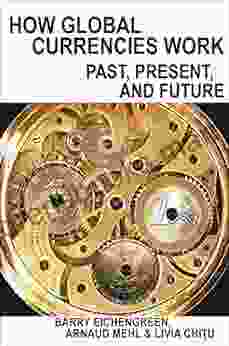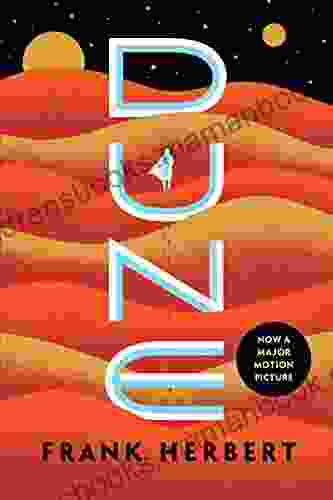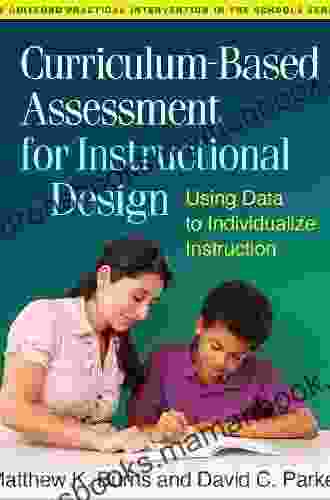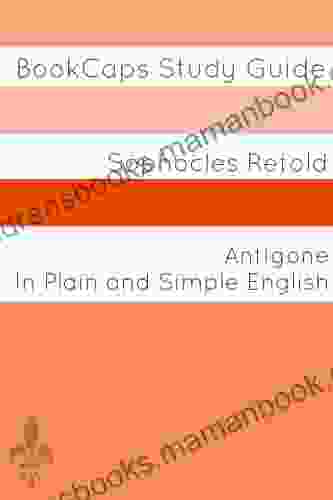Curriculum-Based Assessment for Instructional Design: A Comprehensive Guide

Curriculum-based assessment (CBA) is a systematic process of collecting, analyzing, and interpreting information about student performance in order to improve instruction. It is an essential component of instructional design, as it provides feedback on the effectiveness of instructional materials and methods.
CBA can be used for a variety of purposes, including:
- Formative assessment: To monitor student progress and provide feedback to students and teachers during the learning process.
- Summative assessment: To evaluate student achievement at the end of a unit or course.
- Diagnostic assessment: To identify students' strengths and weaknesses and develop targeted interventions.
- Research assessment: To evaluate the effectiveness of instructional programs and materials.
There are many benefits to using CBA in instructional design, including:
4.8 out of 5
| Language | : | English |
| File size | : | 7207 KB |
| Print length | : | 158 pages |
| Screen Reader | : | Supported |
| X-Ray for textbooks | : | Enabled |
- Improved student learning: CBA can help students to learn more effectively by providing them with feedback on their progress and helping them to identify areas where they need additional support.
- Enhanced instruction: CBA can help teachers to improve their instruction by providing them with data on student performance. This data can be used to identify areas where instruction is effective and areas where it needs to be improved.
- Increased accountability: CBA can help schools and districts to demonstrate the effectiveness of their instructional programs. This data can be used to improve accountability and ensure that students are receiving a high-quality education.
There are many different types of CBA, each with its own unique purpose and benefits. Some of the most common types of CBA include:
- Curriculum-referenced assessment: This type of CBA measures student performance against a specific curriculum. It is often used to identify students who are struggling and need additional support.
- Norm-referenced assessment: This type of CBA measures student performance against the performance of other students in the same grade or age group. It is often used to compare students to each other and to identify students who are performing at a high or low level.
- Criterion-referenced assessment: This type of CBA measures student performance against a specific criterion or set of criteria. It is often used to assess student mastery of a particular skill or knowledge area.
- Performance assessment: This type of CBA measures student performance on a task or activity. It is often used to assess students' ability to apply their knowledge and skills to real-world situations.
The procedures for CBA vary depending on the type of assessment being used. However, there are some general steps that are involved in all CBA processes:
- Identify the purpose of the assessment. The first step is to identify the purpose of the assessment. This will help you to choose the right type of assessment and to develop appropriate assessment items.
- Develop assessment items. The next step is to develop assessment items that are aligned with the purpose of the assessment. Assessment items can be in a variety of formats, such as multiple choice questions, short answer questions, essays, or performance tasks.
- Administer the assessment. Once you have developed your assessment items, you need to administer the assessment to students. The assessment can be administered in a variety of ways, such as online, in person, or in a group setting.
- Score the assessment. Once the assessment has been administered, you need to score the assessment. The scoring process will vary depending on the type of assessment being used.
- Analyze the data. The next step is to analyze the data from the assessment. The analysis process will vary depending on the purpose of the assessment.
- Interpret the results. The final step is to interpret the results of the assessment. The interpretation process will vary depending on the purpose of the assessment.
CBA is an essential component of instructional design. It provides feedback on the effectiveness of instructional materials and methods, and it can be used to improve student learning, enhance instruction, and increase accountability. By understanding the benefits, types, and procedures of CBA, you can use this powerful tool to improve the quality of your instruction.
4.8 out of 5
| Language | : | English |
| File size | : | 7207 KB |
| Print length | : | 158 pages |
| Screen Reader | : | Supported |
| X-Ray for textbooks | : | Enabled |
Do you want to contribute by writing guest posts on this blog?
Please contact us and send us a resume of previous articles that you have written.
 Top Book
Top Book Novel
Novel Fiction
Fiction Nonfiction
Nonfiction Literature
Literature Paperback
Paperback Hardcover
Hardcover E-book
E-book Audiobook
Audiobook Bestseller
Bestseller Classic
Classic Mystery
Mystery Thriller
Thriller Romance
Romance Fantasy
Fantasy Science Fiction
Science Fiction Biography
Biography Memoir
Memoir Autobiography
Autobiography Poetry
Poetry Drama
Drama Historical Fiction
Historical Fiction Self-help
Self-help Young Adult
Young Adult Childrens Books
Childrens Books Graphic Novel
Graphic Novel Anthology
Anthology Series
Series Encyclopedia
Encyclopedia Reference
Reference Guidebook
Guidebook Textbook
Textbook Workbook
Workbook Journal
Journal Diary
Diary Manuscript
Manuscript Folio
Folio Pulp Fiction
Pulp Fiction Short Stories
Short Stories Fairy Tales
Fairy Tales Fables
Fables Mythology
Mythology Philosophy
Philosophy Religion
Religion Spirituality
Spirituality Essays
Essays Critique
Critique Commentary
Commentary Glossary
Glossary Bibliography
Bibliography Index
Index Table of Contents
Table of Contents Preface
Preface Introduction
Introduction Foreword
Foreword Afterword
Afterword Appendices
Appendices Annotations
Annotations Footnotes
Footnotes Epilogue
Epilogue Prologue
Prologue Ash Ericmore
Ash Ericmore Can Uslay
Can Uslay Amy Medling
Amy Medling Karen Jeanne Radley
Karen Jeanne Radley Rachel Dickinson
Rachel Dickinson Stan C Smith
Stan C Smith John T Moore
John T Moore Dale H Schunk
Dale H Schunk Julia Quinn
Julia Quinn Sarah Kucera
Sarah Kucera Daily Diapers
Daily Diapers Zachary Scott Robbins
Zachary Scott Robbins Entrepreneur Publishing
Entrepreneur Publishing Bernie S Siegel Md
Bernie S Siegel Md Sherry Richert Belul
Sherry Richert Belul Kaden James
Kaden James Wilkie Martin
Wilkie Martin K M Shea
K M Shea Brenda Jagger
Brenda Jagger Sophocles
Sophocles
Light bulbAdvertise smarter! Our strategic ad space ensures maximum exposure. Reserve your spot today!
 Rod WardFollow ·13.5k
Rod WardFollow ·13.5k Clinton ReedFollow ·10.8k
Clinton ReedFollow ·10.8k Russell MitchellFollow ·13.6k
Russell MitchellFollow ·13.6k Lord ByronFollow ·6.5k
Lord ByronFollow ·6.5k Jerome BlairFollow ·3.6k
Jerome BlairFollow ·3.6k George OrwellFollow ·7.7k
George OrwellFollow ·7.7k Nick TurnerFollow ·6.8k
Nick TurnerFollow ·6.8k Hassan CoxFollow ·2.1k
Hassan CoxFollow ·2.1k

 Tom Clancy
Tom ClancyReading Wellness: Lessons in Independence and Proficiency
Reading is a fundamental skill that can...

 Brody Powell
Brody PowellHow Global Currencies Work: A Comprehensive Guide to...
Overview of...

 Dwight Bell
Dwight BellDune by Frank Herbert: An Epic Space Opera That Explores...
Dune by Frank...

 Ronald Simmons
Ronald SimmonsAn Anthology of Early Plays (1858-1938): A Journey into...
: Uncovering...

 Dominic Simmons
Dominic SimmonsCulture in the Ancient World: A Comprehensive Exploration...
Culture is a complex and multifaceted concept...
4.8 out of 5
| Language | : | English |
| File size | : | 7207 KB |
| Print length | : | 158 pages |
| Screen Reader | : | Supported |
| X-Ray for textbooks | : | Enabled |












